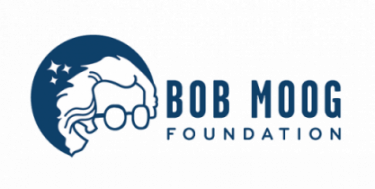Seva David Ball, Audio Preservationist for the Bob Moog Foundation Archives, Reflects on Clara, and Bob’s Connection to Her
This year we celebrate Clara Rockmore with an additional enthusiasm, as she would have been 100.
Listening to unedited audio tapes of Clara Rockmore is something I never expected to do. Much less, I never expected to hear her playing, talking, joking, starting over, correcting, and controlling the general scene inside a studio. And not even when the Grammy Foundation provided some funding to preserve Bob’s tapes, since everything Clara had done was already published.
So I thought.
But because of Bob Moog’s intense interest in theremin-playing, theremin-building, theremin-everythin’, he made recordings and collected recordings of Clara Rockmore, and therefore they are in his archive of reels, full of analog tape. On some of those tapes are indeed unreleased materials; conversations which are unheard; documents unseen.
Inside one box was a letter from George Gorham of Stanfordville, NY, dated June 5, 1964. In it, Mr. Gorham expresses his presumption that Mr. Moog wasn’t able to hear Clara’s interview on WBAI, and therefore had included a “tape recording of the entire program” with hope “that it will be of interest to you”. It was of such interest that Mr. Moog made a backup copy of the tape. From what I can tell, it’s the only tape he made a backup of.
Maybe Bob made the backup because he wanted a version to play on his regular machine at 7.5ips. Or, due to the original tape’s overly thin nature (it was a 0.5mil tape, prone to all types of irritating snags and problems). Possibly, it was because he didn’t want to lose the recording: straight from WBAI, a 68-minute interview of Clara Rockmore by young composer John Corigliano, who was only 26 at the time. (Cool trivia: Yoko Ono was one of his volunteer file clerks at one point). WBAI is part of Pacifica Radio (located mostly on the, well, Pacific side of these Americas), and is a bastion of free-wheel radio thinking for New York (some say it was, some say it still is). The station, given to Pacifica by Louis Schweitzer in 1959, had a reputation. To get a sense of how important this radio station was (and their coverage of Clara Rockmore), you’d have to Google a bit.
One tape is of the 1977 interview with Clara and her sister, Nadia Reisenberg, with Bob Moog, Tom Rhea, and Steve Sherman. Here’s an excerpt in which Clara explains how her first US concert (with the Philadelphia Orchestra) took place, and subsequent tour of the US.
[audio:https://moogfoundation.org/wp-content/uploads/Clara-Rockmore-explains-about-first-concert-tour.mp3|titles=Clara Rockmore’s first US concert & tour]In these conversations and studio performances, her musicianship is stunning. She felt that electronic instruments should simply be a new reflection of how technology enabled great musicians to make more great music; not provide sound effects.
In this regard, Wendy Carlos has offered great support: she too, disliked the avant garde’s noisy abstract expressionism and emergence (especially after WWII), and Wendy had worked extraordinarily hard to produce beautiful music from her customized Moog somewhere in Manhattan, yielding the seminal Switched On Bach of 1968.
Bob Moog recognized this from the very start. At first he felt the synthesizers would be used by very modern composers (such as Herb Deutsch) for extremely new sounds. Bob did not foresee the pop world embracing his version of the synthesizer, but he did have the sense to ignore Ussachevsky’s advice to not put “a keyboard” on the synthesizer.
Good thing! Otherwise, no rock synthesizer moments to savor, no Tomita Debussy, no Trythall Martha White…
Here’s Bob Moog in this 1977 interview, talking about this very aspect of electronic instruments, with Clara thanking him for saying so!
[audio:https://moogfoundation.org/wp-content/uploads/Bob-Moog-and-Clara-Rockmore-1977-Musicianship.mp3|titles=Bob Moog and Clara Rockmore on Musicianship]My experiences with these tapes of Clara are far from over. You can depend on more postings and snippets from these historic tapes, plus I most certainly welcome any corrections or additions to these stories.

